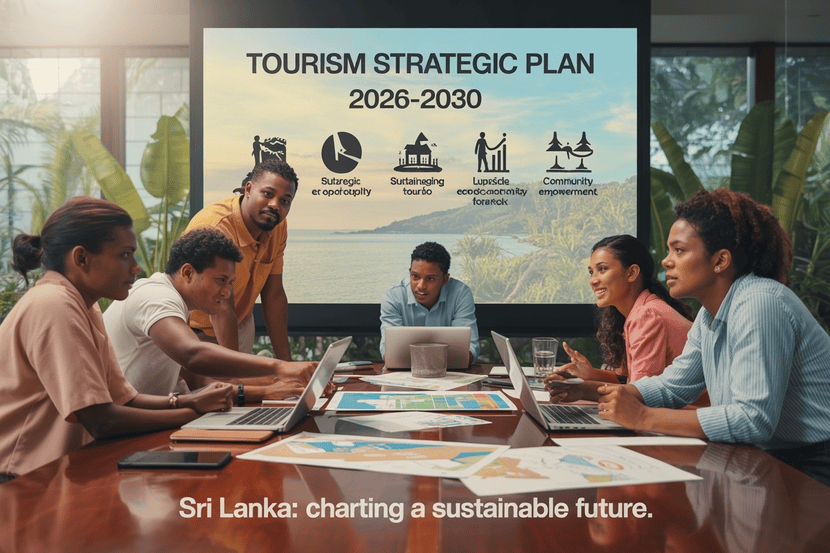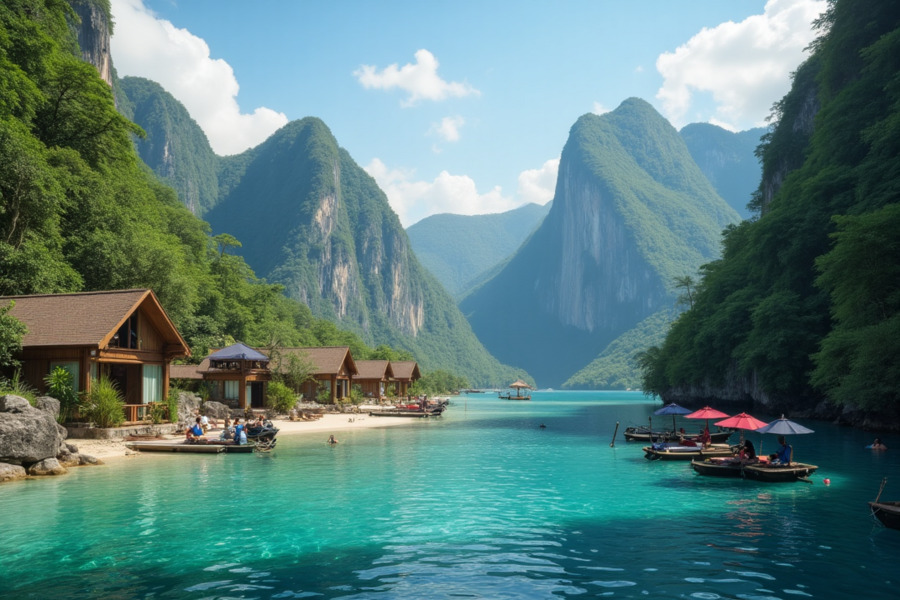≡-Idaho Joins Nevada, Texas, California, Hawai‘i, and South Carolina in a New US Tourism Meltdown as Hotel Occupancy and Visitor Arrivals Stumble This Summer – Viral of Today
<> Viral of Today <>
Home » America Travel News » Idaho Joins Nevada, Texas, California, Hawai‘i, and South Carolina in a New US Tourism Meltdown as Hotel Occupancy and Visitor Arrivals Stumble This Summer Published on
August 27, 2025By: Rana PratapIdaho joins Nevada, Texas, California, Hawaii, and South Carolina in a new US tourism meltdown, and the rest of the country is on red alert for this summer’s downturn. Just as visitor traffic is plummeting in Nevada and Texas, Hawaii, South Carolina, and California, hotel occupancy in Idaho is also suffering, creating a domino effect that showcases greater US tourism turmoil. California and Hawaii’s once heavily touted tourism hotspots have now turned into destinations. Texas, South Carolina, Nevada, and Idaho’s peak summer travel hopes are also dashed. The trend is now apparent with shrinking visitor numbers and declining hotel occupancy rates.This new US tourism meltdown is more than just a statistic. The observable decline in visitor traffic is economically damaging for Nevada and South Carolina. Meanwhile, Idaho and California hotels are struggling with lower occupancy levels. Hawaii, once considered a travel magnet and now struggling with declining tourist traffic, is joined by Texas, which is suffering from a troubling slowdown. A potent mix of rising travel costs, unpredictable weather, and changing travel patterns have caused a simultaneous decline in hotel occupancy, as well as visitor traffic.Thus, Idaho’s joining Nevada, Texas, California, Hawaii, and South Carolina is further proof that no state is insulated from the tourism meltdown. The drop in arrivals and plummeting hotel occupancy rates as the summer tourist season approaches is further evidence that US tourism is facing unprecedented challenges.Idaho’s struggle in Sun ValleyThe Sun Valley Region of Idaho is a well-known retreat for summer vacationers, although this year it suffered from a shortfall in July bookings. The On-the-books data revealed that occupancy was down by almost 4 percent relative to the previous year. At the same time, the average daily rate was set to increase, and it did, growing by over 8 percent. This pricing policy was adhered to in spite of a downturn in demand.According to industry analysts, many mountain towns in the West decreased their rates in response to the weak July and August bookings. This worked to increase occupancy. Sun Valley is one of the few destina4pions that did not employ this strategy. While events like the Allen & Co. conference did support demand, overall bookings were down.This approach answers the broader question many destinations confront: whether to protect rate or occupancy. Idaho’s experience in July illustrates the difficulty in maintaining high prices when demand is low.Idaho Adventures: Wild Beauty AwaitsTop Cities & Places to VisitBoise – State Capitol, Boise River Greenbelt, vibrant downtown.Sun Valley – World-class skiing, hiking, and mountain biking.Coeur d’Alene – Scenic lake cruises, Tubbs Hill, golf resorts.Idaho Falls – Riverwalk, Museum of Idaho, Yellowstone gateway.Things to DoExplore Shoshone Falls, “Niagara of the West.”Go whitewater rafting on the Salmon River.Nevada hit hard by Las Vegas slowdownAs reported, Las Vegas—Nevada’s largest tourism hot spot—experienced one of the largest reductions of any major US market. In the week ending July 5, hotel occupancy dropped almost 17% year-on-year. The mean daily rate took a hit of over 14%, while the revenue per available room plummeted by almost 29%.This was a sharp reversal for a city that relies heavily on events, conventions, and gaming tourism. The weakness was not restricted to a single weekend. Throughout July, hotels in Las Vegas experienced a decline in spending and demand. Economists cite the ever-increasing room supply, changes in spending patterns, and the overall economic anxiety as the reasoning.For the state of Nevada, this should come as a major alarm. The tourism sector is one of the primary contributors for generating employment as well as tax revenue. A prolonged decline would have a devastating impact on the airlines, casinos, restaurants, and small local businesses.Nevada Thrills: Beyond Las Vegas LightsTop Cities & Places to VisitLas Vegas – The Strip, Bellagio Fountains, world-class shows.Reno – Casinos, Truckee River, Nevada Museum of Art.Lake Tahoe – Beaches, ski resorts, hiking trails.Valley of Fire State Park – Red sandstone landscapes.Things to DoTry your luck in iconic Las Vegas casinos.Hike Red Rock Canyon for stunning desert views.Attend a major event like Burning Man or EDC.Texas facing urban hotel pressureHouston’s hotel occupancy dropped 20 percent year-over-year in July. Average daily rates fell around 11 percent, a result of shrinking corporate event demand, weaker convention business, and aggressive hotel competition.Urban markets have always been at risk when it comes to sudden drops in group bookings, a pattern exposed by July’s results in Texas. The decline in Houston also stems from broader national challenges, lessened seat capacity by airlines, and a slowed growth rate of corporate travel.The picture was steadier in Austin and Dallas, but the Texas travel case shows that the heavy metropolitan areas were still struggling under warm season pressure. Revenue managers in the Texas metropolitan areas are struggling to generate revenue in a business environment dominated by high supply and stagnant demand.Texas Treasures: Big Fun in the Lone Star StateTop Cities & Places to VisitAustin – Live music, Barton Springs, food trucks.San Antonio – The Alamo, River Walk, Missions Trail.Houston – Space Center, museums, diverse food scene.Dallas – Arts District, JFK Museum, State Fair.Things to DoCatch live country music or BBQ festivals.Explore Big Bend National Park and desert trails.Cheer at a Texas football game for true local spirit.California’s coastal underperformanceCalifornia is still one of the most sought after states in the country. However, the state’s economy is still recovering from the effects of the pandemic, with California multi-regional economic projection showing golfing, camping, and fishing emerging in the lower ranks of emerging sub – aggregates. In San Diego County, mid-July occupancy rates decreased by almost 4 percent from the same interval last year. Average daily rates dropped, resulting in a revenue loss of around 7 percent in the preceding figure.Hotel analysts have stated the reason for decreased occupancy rates is an uptick in family vacationing, resulting in more people traveling, everything, from price, location, and comparably cheaper alternatives, such as vacation rentals. It is encouraging to note hotels have reported upticks in price immediate price-reduction changes as a direct result of rising vacation rentals competing for the same cohort of people, families on an economic vacation. California state’s tourism officials expressed enthusiasm owing to foreign arrivals alongside the state’s theme parks and cultural events for California residents and international arrivals, suggesting further modification to the futuristic view of California tourism. However, July’s hotel data showcased that even theme parks and cultural events, alongside international arrivals, are not sheltered from weak domestic and foreign tourism.California Dreaming: Golden State EscapesTop Cities & Places to VisitLos Angeles – Hollywood, Venice Beach, Griffith Observatory.San Francisco – Golden Gate Bridge, Alcatraz, Fisherman’s Wharf.San Diego – Balboa Park, beaches, San Diego Zoo.Yosemite & Sequoia Parks – Iconic national parks.Things to DoDrive the scenic Pacific Coast Highway.Taste wines in Napa & Sonoma Valley.Surf, ski, and hike — all in the same trip.Hawai‘i reports fewer visitorsHawaii’s tourism sector commenced summer trends with mixed indicators. The visitor tally rose slightly from 849,793 in June 2025 which is slightly down from the 2024 estimate of 870 thousand achieving spending growth of almost 3 percent. Moreover, it is to be noted that spending also increased which is a good sign.While the remaining report for July is still in the works, it is evident through the data for the 5th of July, coupled with airline ticket purchases, that there is going to be a further decline. Inflation, coupled with airfare prices, has also made it slightly more difficult for families to travel. Compounding these factors is the surge in competiton when it comes to long haul travel, which is further limiting access for commuters to Hawaii.This also points to the further problems that Hawaii’s tourism sector faces. These challenges are worrisome especially when the state tourism department relies heavily on commision’s earned through taxes for the economy’s growth without jobs.Hawai‘i Paradise: Islands of AlohaTop Islands & Places to VisitO‘ahu – Waikiki, Pearl Harbor, Diamond Head.Maui – Road to Hana, Haleakalā sunrise, luxury resorts.Big Island – Volcanoes National Park, Kona coffee farms.Kaua‘i – Na Pali Coast, Waimea Canyon, lush jungles.Things to DoSnorkel in crystal-clear reefs with sea turtles.Attend a traditional luau with hula dance.Go whale watching in Maui (winter season).South Carolina’s mixed beach seasonSouth Carolina, home to Myrtle Beach, also faced an uneven July. During the July 4 holiday itself, hotel occupancy reached an impressive 92.5 per cent, almost flat with last year. But when looking at the entire holiday week, occupancy dropped by more than 8 per cent year-on-year.Weather disruptions, shifting school calendars, and tighter household budgets played a role. Families who once booked a full week at the beach are now shortening stays or seeking lower-cost rentals. While the destination still drew crowds, the overall weekly performance pointed to softness.For South Carolina, this mix of strong peak days and weaker stretches shows the importance of understanding traveller behaviour in detail.South Carolina Charm: Southern Hospitality at Its BestTop Cities & Places to VisitCharleston – Historic homes, Battery promenade, art galleries.Myrtle Beach – Boardwalk, amusement parks, golf courses.Hilton Head Island – Luxury resorts, kayaking, biking trails.Greenville – Falls Park on the Reedy, Main Street dining.Things to DoStroll through plantations and gardens.Relax on sandy beaches along the coast.Explore Gullah culture and Lowcountry cuisine.Bright spots in other statesThe impacts of a meltdown were not felt in every state. In Virginia, hotel occupancy, rate, and revenue per room increased in July, albeit modestly. Minnesota showed growth as well, with occupancy and revenue per room increasing by 2 percent.Near the middle of July, New York City and Seattle were notable for having some of the highest occupancy rates in the country, both surpassing 84 percent. This illustrates that some major gateway cities which receive international visitors and have a robust schedule of events continue to bounce back.These bright spots demonstrate that the national story is not all negative. At the same time, they showcase the degree to which the recovery is complicated and fragmented.What the national numbers showHotels across the country achieved a new record in the number of rooms sold during Independence Day; however, the average occupancy for the entire week still lagged behind the past two years. This indicates that the increase in supply is outpacing demand.By the middle of July, national revenue per available room declined by over 3% relative to 2024, which, alongside a steep decrease in revenue coming from Las Vegas, Houston, and Los Angeles, resulted in a heavy drag on the average. By the end of the month, occupancy was hovering around 71%, marking a slight decrease from the previous year, while the average rates remained nearly unchanged.The national picture indicates an industry that is still in a phase of adjustment. Soaring inflation, unpredictable household spending, and shifts in discretionary spending, coupled with an increase in available travel options, are all impacting performance.Why this matters for the economyTourism serves purposes beyond relaxation. It serves as an essential contributor to state and local economies. Reduced hotel occupancy affects tax revenue, transportation, dining, and retail businesses. In states like Nevada and Hawai‘i, where tourism is pivotal, a sluggish summer season poses significant challenges.Reduced hotel occupancy affects jobs as well. Many hotels cut back employee hours during slow seasons which reduces local jobs and family earnings. The hospitality industry is typically one of the first to feel the impact of a downturn in consumer spending.For these states, the July data is more than mere statistics. It is an indicator of deeper economic concern that may persist into the fall.The road aheadIn looking ahead, many locations are rethinking their approaches. For instance, Colorado and Utah chose to ease their daily rates to increase occupancy, and this policy reversal reversed the waning demand. In contrast, Idaho maintained their price structure, and suffered a decline in bookings.The conclusion is obvious. Flexibility is important. Destinations which rely on consumer spending and are able to change their offers quickly are in a better position to sustain demand. With uncertain economic conditions, these issues will remain critical in pricing strategy and demand responsiveness through the end of 2025.Cultural events and global travel patterns will also have an impact. States which design rich cultural calendars and develop international air connections are likely to have more demand. Active coordination among boards of tourism, the hospitality industry, and residents will be extremely important.Idaho joins Nevada, Texas, California, Hawai‘i, and South Carolina in a new US tourism meltdown because soaring travel costs, extreme weather, and shifting demand have caused hotel occupancy and visitor arrivals to stumble this summer.ConclusionThe summer of 2025 has now further underscored both the resilience and the fragility of the US tourism sector. Idaho now joins Nevada, Texas, California, Hawai’i, and South Carolina in registering a decline in hotel occupancy or visitor numbers. Such declines indicate a new form of tourism collapse, where consumer restraint and supply growth are in direct competition.Despite such systems of negative tourism, bright spots like Virginia, Minnesota, New York, and Washington demonstrate that it is indeed possible to achieve strong performance. The competition now turns to how quickly and effectively we make sense of the new systems, act, and maintain tourism.Certainly, tourism will still be a key sector of the US economy. However, these results from July serve as evidence that in the current ecosystem sophisticated systems of automated tourism are no longer the dominant framework. Rather, States should strive harder in a world of evolving travel preferences to both maintain and attract tourism worldwide.
This information will surprise you!
See also
- Read until the end to discover everything.
- Important information you need to know.
- Interesting facts and helpful tips.
Conclusion
Did you enjoy the news? Keep following us daily!













